Marketing
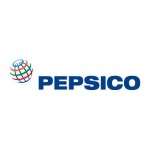
PepsiCo segmentation, targeting and positioning decisions can be specified as the essence of overall marketing efforts. Segmentation involves dividing population into groups according to certain characteristics, whereas targeting implies choosing specific groups identified as a result of segmentation to sell products. Positioning refers to the selection of the marketing mix the most suitable for the target customer segment. PepsiCo uses multi-segment type of positioning and accordingly, it targets more than one customer segment at the same time with different products or service packages. For example, Pepsi-Cola is positioned as soft drink that tastes good and has a pleasantly refreshing impact. However, Pepsi-Cola contains a high amount of sugar and it is not positioned for customers that are concerned about health implications of consuming carbonated soft drinks. For this specific customer segment PepsiCo offers Diet Pepsi, which is positioned as a soft carbonated drink that contains less among of sugar compared to Pepsi-Cola and other soft drinks. The following table illustrates PepsiCo segmentation, targeting and positioning: Type of segmentation Segmentation criteria PepsiCo target segment Geographic Region Domestic/international Density Urban/rural Demographic Age 15-45 Gender Males & Females Life-cycle stage Bachelor Stage young, single people not living at home Newly Married Couples young, no children Full Nest I youngest child under six Full Nest II youngest child six or over Income Average, above average and high earners Occupation Students, employees, professionals Behavioral Degree of loyalty ‘Hard core loyals’ and ‘Soft core loyals’ Benefits sought Refreshment, enjoying good taste, satisfaction of a habit, spending time Personality Easygoing/determined/ambitious User status Regular users Psychographic Social class Working class, middle class and upper class Lifestyle[1] Aspirer, Succeeder, Explorer PepsiCo segmentation, targeting and positioning It is important to specify that PepsiCo portfolio comprises 22 brands including Pepsi-Cola, Lay’s, Mountain Dew, Gatorade, Tropicana and others[2], and the Table 2 above specifies PepsiCo target…
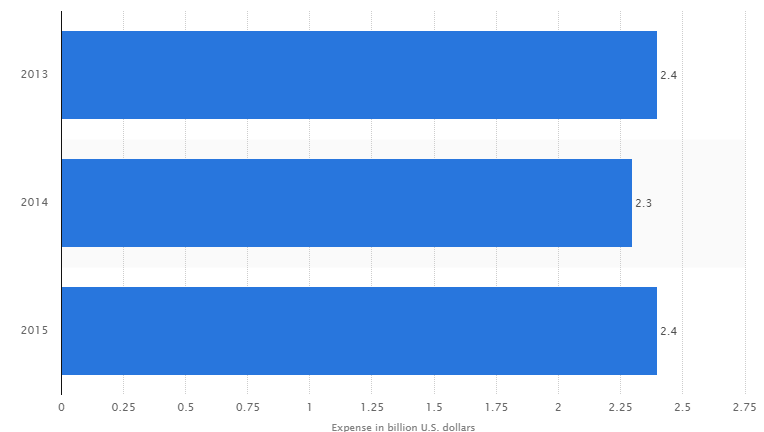
PepsiCo marketing strategy integrates a set of elements of the PepsiCo marketing communication mix as discussed further below. In 2015, PepsiCo increased its spending on advertising and marketing as a percentage of sales by 40 basis points.[1] PepsiCo marketing strategy benefits from the application of creativity and strategic collaborations. For example, in 2015 Lay’s collaborated with renowned artist Malika Favre to develop iconic illustrations for special edition packaging, promotions and activations as part of the brand’s global summer campaign.[2] PepsiCo marketing strategy also relies on celebrity endorsement to a considerable extent. The list of celebrities involved in spreading PepsiCo’s marketing message include but not limited to Usher and Serena Williams, as well as Vine and Snapchat sensation Jerome Jarre.[3] Advertising PepsiCo uses print and media advertising extensively as a traditional channel to transmit the marketing message to the target customer segment. PepsiCo print and media advertising occasionally contains comparative campaigns aimed at damaging the brand image of its main competitor – The Coca Cola Company. For example, “One ad shows a happy Pepsi drinker mocking a Coke buyer by telling him, “you’ve still got the polar bear.”[4], thus mocking Coca Cola’s the Christmas Polar Bear campaign. As it is illustrated in Figure 3 below, although the amount of PepsiCo’s advertising budget did not change significantly during the last three years, the pattern of distribution of this budget has changed. Specifically, taking into account the increasing integration of social media into personal lives of billions of customers around the globe, the company is increasingly investing its advertising dollar for social media advertisements. PepsiCo’s advertising budget As a result, PepsiCo has been able to launch a series of successful viral marketing campaigns with an evident positive implications on the brand image. For example, Pepsi Max Test Drive Prank viral video launched in…
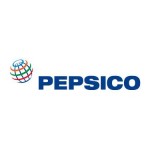
PepsiCo 7Ps of marketing comprises seven elements of the marketing mix. These are product, place, price, promotion, process, people and physical evidence. Product. PepsiCo sells a wide range of beverages, foods and snacks under 22 different brands that include Pepsi-Cola, Lay’s, Mountain Dew, Gatorade, Tropicana, Diet Pepsi, 7UP, Doritos and other internationally famous names[1]. Although, PepsiCo senior management led by Chairman and CEO Indra Nooyi does stress the direction of the strategy towards healthy products, the majority of products within PepsiCo portfolio are beverages high in sugar and food and snacks high in salt. PepsiCo products are attractively packaged with colorful designs and they are readily available in many supermarkets and grocery stores around the globe. PepsiCo product portfolio also includes brand-related accessories, drink gears and a limited range of other products related to specific brands. However, it is important to note that the sales of these accessories account for only a small fraction of the total revenues. Place. PepsiCo products are sold in more than 200 countries and territories around the world.[2] Consumers can purchase PepsiCo products from supermarkets, mini-markets and grocery stores of various formats, restaurants and fast food restaurant chains. The company increasingly focuses on fast-food chains in order to achieve a greater level of market penetration. In 2015 alone, more than 5,000 Subway locations were added to its customer portfolio across Canada, the UK, the Netherlands and India.[3] PepsiCo does not use online sales channels to sell its food, snacks and beverages. However, PepsiCo food, snacks and beverages can be purchased online from the websites of major supermarket chains along with other products. The use of online sales channels by PepsiCo is limited to brand-related accessories, drink gears and a limited range of other products related to specific brands. Price. PepsiCo pricing strategy is market-orientated and…
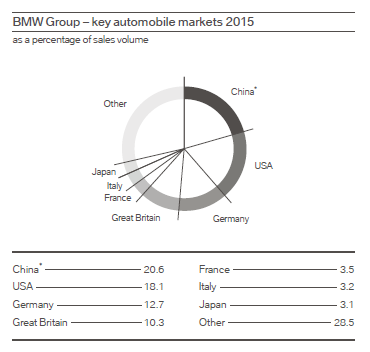
BMW’s 7Ps of marketing consists of product, place, price, promotion, process, people and physical evidence elements of the marketing mix. Product. BMW Group is engaged in development, manufacturing and the sale of engines as well as all vehicles equipped with those engines. BMW Group owns and sells its vehicles under the following three brands: BMW MINI Rolls Royce The company pursues product differentiation business strategy and maintains 13 research and development centres in five countries[1]. Vehicles produced under BMW Group brands belong to the premium segment and accordingly, they have highly efficient and reliable with advanced set of features and capabilities. BMW leads the automobile industry in electromobility and the brand is also famous for achieving a high level of integration of internet and digitalization in its vehicles. Place. BMW Group has about 6,000 dealerships and sales representatives in 150 countries globally.[2] The worldwide distribution network currently consists of around 3,310 BMW, 1,550 MINI and 140 Rolls-Royce dealerships[3] In China alone, around 60 BMW dealerships were opened in 2015[4]. The dealership and agency network for BMWi comprises about 950 locations. As it is illustrated in figure below, China, USA and Germany represent the largest automobile markets for BMW Group and accordingly, these countries accommodate the largest numbers of dealership offices and representatives. BMW Group key automobile markets (Annual Report, 2015) Price. BMW pricing strategy can be described as premium. High level of reliability of BMW Group vehicles and advanced set of features and capabilities integrated into the vehicles come for expensive prices. For example, as of April 2016, BMWi3 electric car costs more than USD 45,000 and customers have to pay more than USD 100,000 for BMW X6 model[5]. Additionally, BMW uses product line pricing strategy charging different prices for different models of its products. Geographical pricing represents another important…
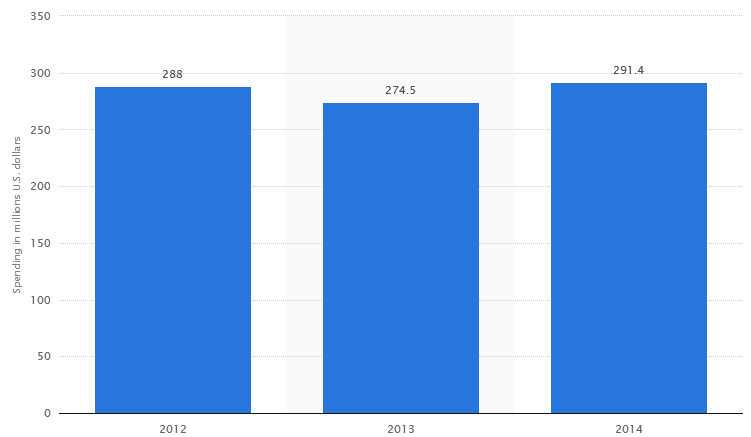
BMW Group uses a range of elements of the marketing communication mix such as print and media advertising, sales promotions, events and experiences, public relations and direct marketing in an integrated manner in order to communicate its marketing message to the representatives of the target customer segment. BMW Group marketing message is focused on high level of digitalization of BMW Group vehicles and their advanced set of features and capabilities. As it is illustrated in figure below, in 2014 BMW Group invested USD 291.4 million in advertising, which is a small increase compared to the previous periods. BMW Group advertising spending Advertising BMW Group uses print and media advertising extensively to communicate its marketing message to the members of its target customer segment. The choice of specific print and media platforms for advertisements are guided by interests of the target customer segment. At the same time, BMW is increasingly shifting into mobile media as effective advertising platforms. In 2015, BMW started advertising in WeChat a popular messaging app in China with around 550m monthly users[1] Viral marketing can be defined as a type of marketing that is relies on spreading the marketing message amongst members of existing group. At present, viral marketing is effectively used by major car manufacturers such as Volkswagen, Toyota and Honda, but potential benefits of viral marketing have not been yet fully realised by BMW strategic marketing team. Engagement in viral marketing can provide BMW the advantages of spreading the marketing message in a cost-effective manner. Moreover, viral marketing is associated with highly effective customer targeting and the spread of the marketing message in the global scale. However, BMW marketing team need to be aware of disadvantages associated with viral marketing as well. To be more specific, these disadvantages include lack of control tools over viral…

BMW segmentation, targeting and positioning can be specified as the base of the marketing efforts of the company. BMW, as well as, any other business entity has to divide population into different categories according to a set of certain criteria and develop products and services that are particularly attractive to this specific group. This marketing process is known as segmentation, targeting and positioning. Segmentation, targeting and positioning is important because businesses cannot offer products and services that are attractive to all members of population in an equal manner. Segmentation implies dividing potential customers into different groups according to certain criteria such as age, social class, lifestyle etc. Segmentation can be divided into four types: demographic, behavioral, and psycho-graphic. Segmentation stage is followed by targeting and this stage is associated with selection of specific group(s) as a target customer segment. Positioning is the last stage in segmentation, targeting and positioning and this stage involves selection of the marketing mix that is relevant to the chosen target customer segment in the best possible manner. BMW Group uses mono-segment type of positioning and accordingly, the company makes an appeal to a single customer segment. In other words, BMW Group product portfolio only comprises expensive vehicles at a premium level and the company does not have budget vehicles in its portfolio to target individuals and households with a smaller budget. The following table illustrates BMW segmentation, targeting and positioning: Type of segmentation Segmentation criteria BMW Group target segment BMW MINI Rolls-Royce Geog-raphic Region Domestic/international Domestic/international Domestic/international Density Urban/rural Urban Urban Demog-raphic Age 20-65 25-45 40+ Gender Males & Females Males & Females Males & Females Life-cycle stage Bachelor StageNewly MarriedCouples Full Nest I Full Nest II Full Nest III Empty Nest I Empty Nest II Solitary Survivor I Solitary Survivor II Bachelor StageNewly MarriedCouples Full Nest I…
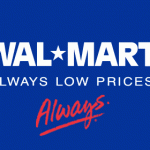
Walmart marketing budget equaled to USD2.4 billion for both fiscal 2015 and fiscal 2014 and USD2.3 billion for the fiscal year of 2013[1]. These funds are invested in Walmart marketing communication mix that include print and media advertisements, viral marketing, sales promotions, events and experiences, public relations and direct marketing components of the marketing communication mix. Advertising Traditionally, print and media advertising has represented the core of Walmart marketing strategy for many years. However, in 2015, Walmart Vice President Wanda Young announced planned shift of the main focus from the print advertising to the mobile marketing campaigns.[2] Such a change in Walmart marketing strategy is expected to target young people in general and Millenials in particular. Viral marketing is another direction that is being extensively utilized by Walmart with varying levels of success. For example, Walmart marketing video ‘Work is a Beautiful Thing: Meet Patrick’ released in 2014 has attracted more than 1.2 million views in just six days with thousands of positive comments and with evident positive implications on the brand image.[3] Nevertheless, Walmart still uses print and media advertising to a considerable extent and the company places advertisements on newspapers, magazines and TV channels popular with the target customer segment. Sales Promotion Sales promotion is used by Walmart in an extensive manner. The retailer launches seasonal sales promotions in a regular manner along with sales promotions in before and during public holidays and other memorable days. Particularly, Black Friday is a massive sales promotion day for Walmart each year eagerly anticipated by millions of customers. Walmart maintains Daily Savings Center section in its official website where online and offline sales promotion offers are announced. Sales promotion also has been adapted as an effective tool to increase the sales of Sam’s Club segment of the business. Specifically, the emphasis of…
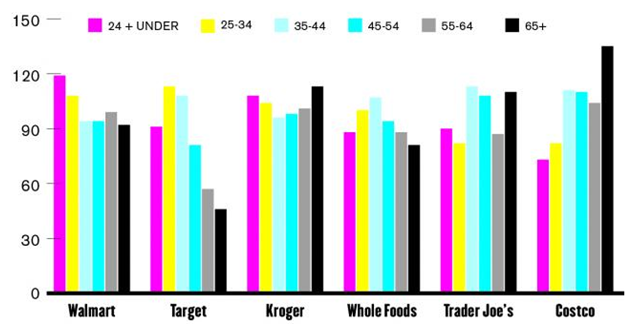
Walmart segmentation, targeting and positioning is the core focus of Walmart strategic marketing. Segmentation refers to dividing population into groups according to certain characteristics, whereas targeting is associated with choosing specific groups identified as a result of segmentation to sell products. Positioning refers to the selection of the marketing mix the most suitable for the target customer segment. Walmart uses mono-segment type of positioning and accordingly, Walmart marketing management appeals to single customer segment who place greater value on the price attribute of products compared to other attributes. The following table illustrates Walmart segmentation, targeting and positioning: Type of segmentation Segmentation criteria Walmart target segment Geographic Region Domestic and international Density Urban and rural areas Demographic Age Individuals of all age categories Gender Males and Females Life-cycle stage Bachelor Stage young, single people not living at home Newly Married Couples young, no children Full Nest I youngest child under six Full Nest II youngest child six or over Full Nest III older married couples with dependent children Empty Nest I older married couples, no children living with them Empty Nest II older married couples, retired, no children living at home Solitary Survivor I in labor force Solitary Survivor II retired Income Individuals and households with low incomes and middle class Occupation Students, manual workers, floor level employees and middle level managers in public and private sectors Behavioral Degree of loyalty ‘Hard core loyals’, i.e. individuals who always purchase the product / brand in question. ‘Switchers’, i.e.individuals who do not specifically seek out a particular brand, but rather purchase the brand available to them at time of need, or that which was on sale Benefits sought Cost advantage Personality Reserved and cost-conscious individuals User status non-users, potential users, first-time users, regular users, or ex-users of a product Psychographic Social class Lower class, working and middle class Lifestyle Resigned,…
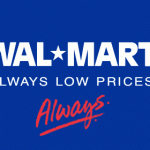
Walmart 7Ps of marketing comprises elements of the marketing mix that consists of product, place, price, promotion, process, people and physical evidence. Product. Walmart sells a wide range of products belonging to the following categories: groceries entertainment health and wellness – including pharmacy hardlines – including stationery, auto spares, and accessories hardware apparel home furnishings household appliances Despite the low prices, Walmart attempts to position its products as quality and this message is integrated into company’s marketing strategy. For example, in China Walmart utilizes “Worry Free Fresh” program to provide a money-back guarantee if its produce and meats don’t meetcustomer expectations. Wallmart.com offers about 8 million items in the US[1] and it is duly considered to be one of the largest online stores in the world. Place. With more than 11,000 stores, websites and mobile apps, customers can access Walmart via multiple channels.[2]During the fiscal year of 2016, Walmart is planned to expand by approximately 15 to 16 million total net retail square feet, representing between 240 and 270 units[3]. Walmart stores are operated in the following four formats: Walmart discount stores Walmart express stores Walmart super centers Walmart neighborhood markets Walmart has launched its dedicated e-commerce websites in 11 countries and the proportion of online sales compared to the traditional offline sales has been consistently increasing for the past 10 years. Price. Walmart has based its competitive advantage on cost leadership. Accordingly, the retailer aims to offer the lowest price possible according to its motto ‘everyday low prices’. Walmart Price Match Policy formulated on its website states the following: “We’re committed to providing low prices every day, on everything. So if you find a lower price from an online retailer on an identical, in-stock product, or the item purchased from Walmart.com is now listed at a lower price, tell us and…
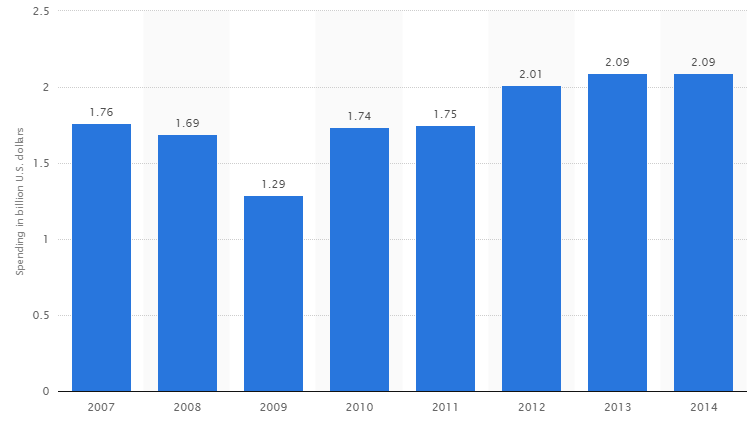
Toyota’s marketing budget has been consistently increasing after the global economic and financial crisis of 2007 – 2009 in line with overall tendency in automobile industry. Toyota marketing strategy succeeds in closely associating the brand with the best practices of Japanese ways of doing things. Specifically, Toyota marketing strategy focusses on the communication of marketing message based on the efficiency of manufacturing and use of superb vehicles. A set of marketing communication channels such as print and media advertising, sales promotion, events and experiences, public relations and direct marketing techniques are used an integrated way in order to this message to the target customer segment. Advertising Print and media advertising is one of the core elements of Toyota marketing strategy. The company uses newspapers, magazines, TV and radio ads, as well as, billboards and posters to reach its target customer segment. As it is illustrated in Figure 7 below, in the US alone the volume of advertising spending of the company reached USD 2.09 billion in 2014 and the largest proportion of this amount, USD 959 million was spent to produce and broadcast TV ads.[1] Toyota’s advertising spending in the US (in USD billions)[2] Toyota employs lifestyle-focused branding activities to promote Lexus brand. The global brand campaign slogan “Amazing in Motion” has proved to be a highly successful marketing move. As a continuation of this campaign, Toyota has partnered with rapper will.i. am to “challenge conventional notions of technology, design and music in a unique experience”[3]. The remix of the rapper’s famous hit #thatPOWER was created to feature Lexus NX highlighted by complex laser technology. Toyota viral marketing also plays an important role in increasing the level of brand awareness and promoting specific products of the company. The list of the most successful Toyota viral marketing campaigns include ‘Jungle…
